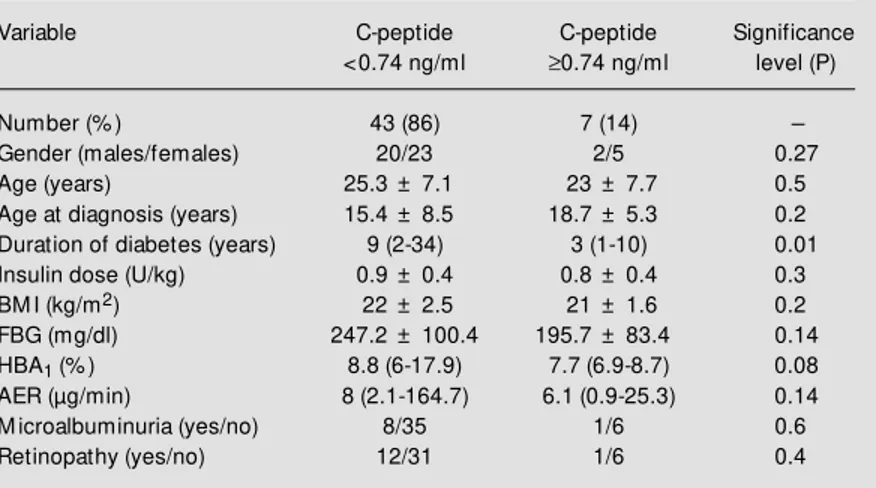Residual ß-cell function and microvascular complications in type 1 diabetic patients
Texto
Imagem


Documentos relacionados
Although BV showed a significant correlation with PV (r S = 0.95, P<0.0001), the basal levels of C-peptide did not differentiate the groups with and without response to the
Diabetic patients with proteinuria or those on dialysis usually present severe forms of diabetic retinopathy, but the association of diabetic retinopathy with early stages of
type of cell in charge of presenting antigen, the number of a specific peptide presented on each cell, the quantity and type of co-stimulatory molecules, the type and condition
The present study showed that the major retinal complications in transplanted patients were deterioration of diabetic retinopathy (or new diabetic retinopathy due to onset
OBJECTIVE: To evaluate the effects of the levels of glycemic control on the frequency of clinical complications following invasive dental treatments in type 2 diabetic patients
Clinical risk factors and the role of VDR gene polymorphisms in diabetic retinopathy in Polish type 2 diabetes patients?. On the importance of global cardiovascular
Relationships among islet cell antibodies, residual β -cell function, and metabolic control in patients with insulin-dependent diabetes mellitus of long duration: use of a
Objective: To explore the impact on microvascular complications, long-term preser- vation of residual B-cell function and glycemic control of patients with type 1 diabetes